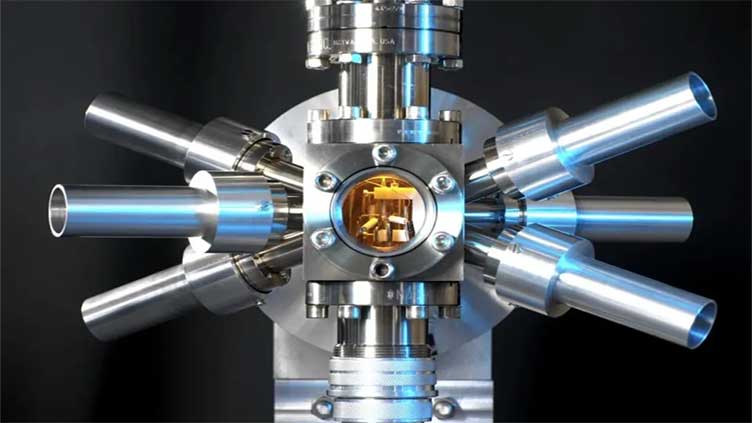Scientists invent clock that could change time as we know it

Technology
They hope to ‘redefine the second’
(Web Desk) - Scientists in China have invented a clock that could change time as we know it.
The brainy researchers built an optical clock that loses or gains one second every 7 billion years.
This brings humans closer to redefining the second as a basic unit of time.
The incredible accomplishment makes China the world's second country to achieve such accurate timekeeping.
The team, led by physicist Pan Jianwei, wrote in the peer-reviewed journal Metrologia earlier this month.
They said the gadget paves the way for the establishment of a global optical clock network.
They added it also opens up new opportunities to test fundamental physics theories, detect gravitational waves and search for dark matter.
The current record holder for the most precise strontium-based optical clock is hosted at the University of Colorado in Boulder.
It was developed by a group led by Chinese-American physicist Jun Ye.
It remains slightly more accurate than its Chinese competitor and its operation is more stable.
Other players in the race include the University of Tokyo and the Institute of Physical and Chemical Research in Japan, and the National Metrology Institute of Germany.
Optical clocks hold great potential for applications in critical infrastructure in the future.
They could significantly enhance the precision of global navigation satellite systems, and help build highly secure communication networks based on quantum key distribution.
They could also improve the synchronisation and efficiency of power grids, and even play a vital role in national defence and security, according to South China Morning Post.
Today, the definition of a second is based on a type of atomic clock called the microwave fountain clock.
It works by releasing cesium atoms upwards, which then fall under gravity in a fountain-like motion while they are excited with microwave pulses.
Their electrons then absorb and emit light particles to jump between different energy levels.
By counting such cycles as “ticks” that mark fractions of a second, scientists can achieve high-precision timekeeping with stabilities of several quadrillionths.
But the precision of a microwave clock is limited by the microwave frequency standard.
In recent years, researchers have built optical clocks which use laser light to drive electronic transitions and achieve performance that is two orders of magnitude better than their microwave counterparts.
But, if microwave clocks are to be replaced by optical ones for the future definition of time, at least three laboratories in the world will need to have an optical clock with stability below 5 quintillionths and uncertainty below 2 quintillionths.


